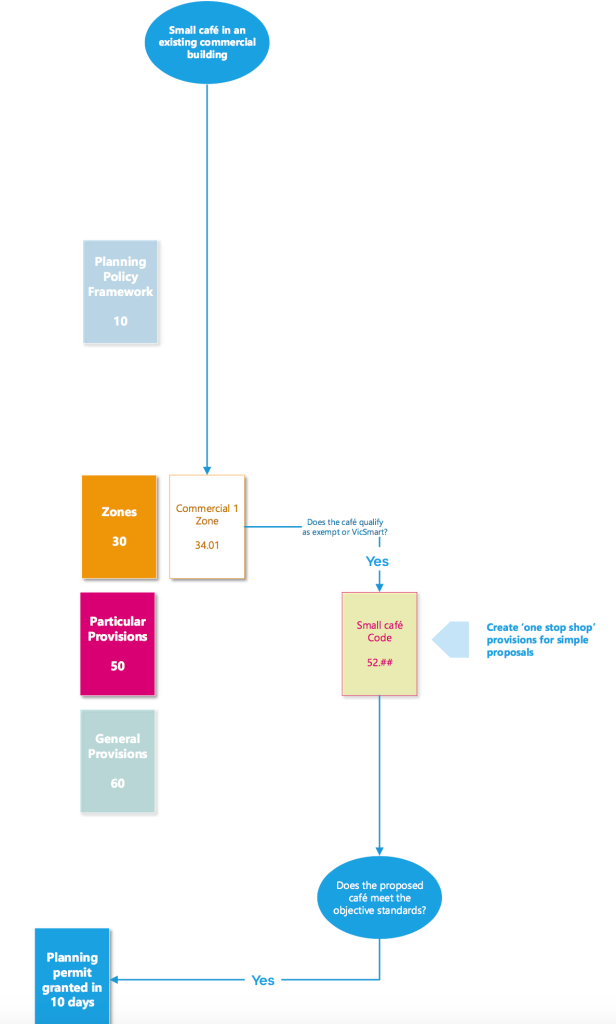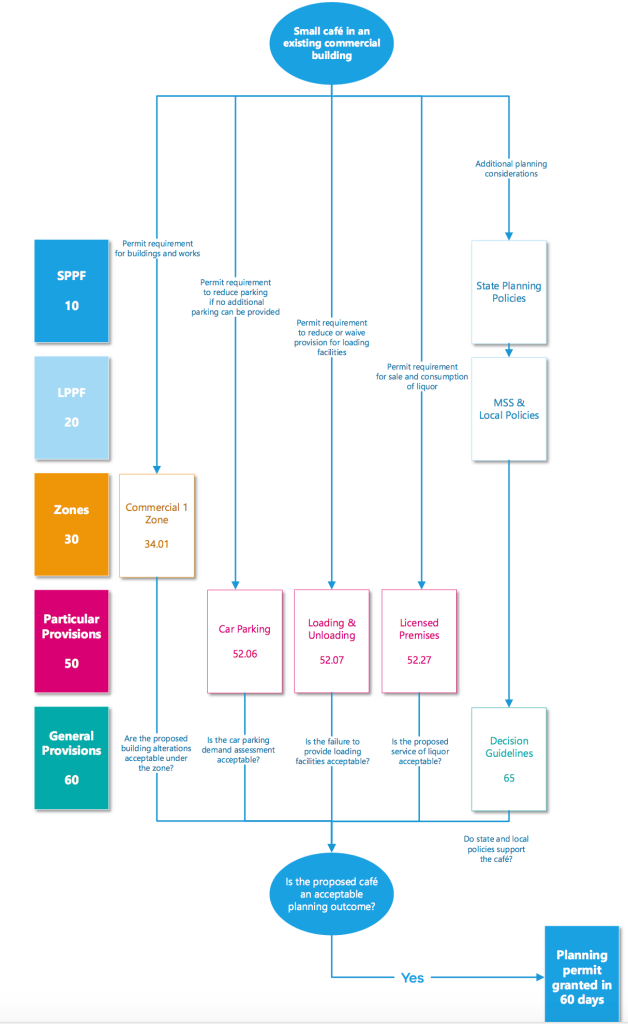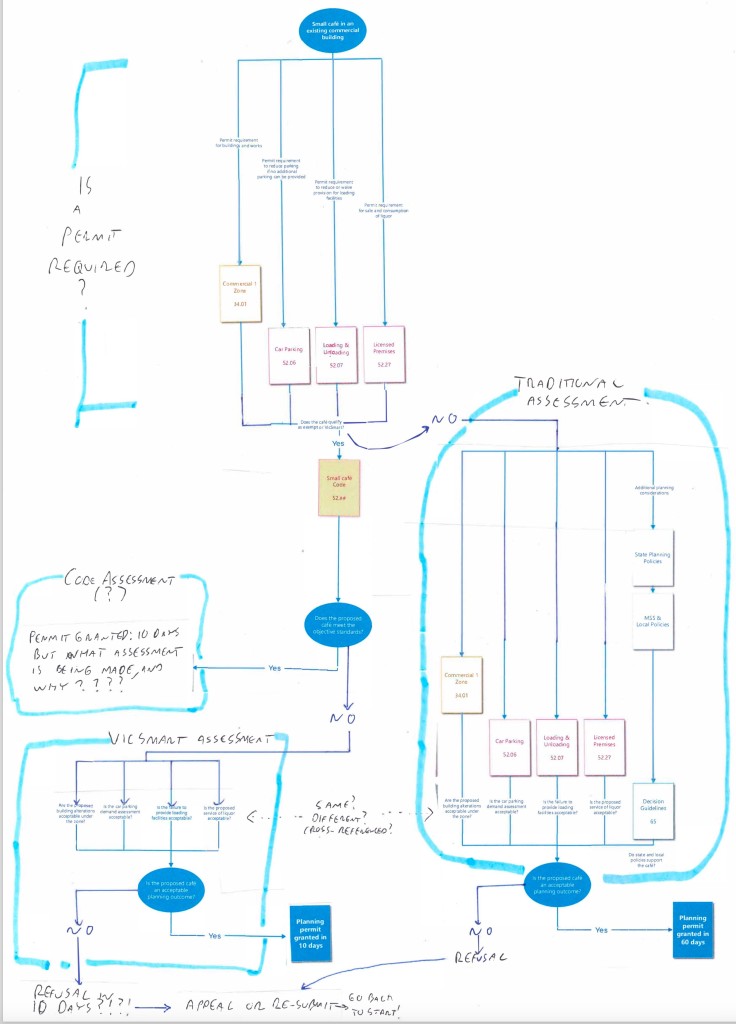The Smart Planning discussion paper has dropped. At some point I expect I’ll take a more detailed run through of what is a complex document that mixes various good ideas with a number of really bad ones. It’s an infuriating read, partly because it is so predictable: in its broad strokes, it’s pretty much exactly what could be envisaged from the Department’s material when I wrote about the program last year.
Rather than exhaustively work through the good and the bad of this new paper now, I wanted to focus on one really weird diagram and use it to unpick the hidden complexities of this document. That diagram is this one, one page 29 of the paper, showing a proposed new assessment to pathway for simpler matters.

It is presented in contrast to this one, outlining the existing process.

Wow, the existing system does look complex. And look at all that glorious white space in the new process – that does seem enticing.
[Edit 1 December – below is my attempt at a more honest reckoning of this system diagram. Excuse my crazy person hand-writing.]

Smart Planning system flow diagram



